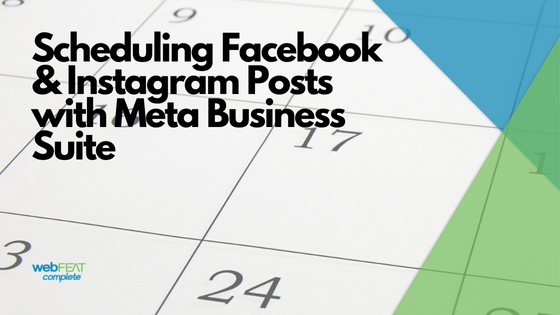Keyword Research. It’s an important practice in our industry, and a popular topic. When I type it into Google, there are “about 13,600,000 results.” Wow. Guides, Tools, Software, How to’s, all of that good ol’ stuff. All built on the basic premise of identifying what users in a target audience are searching for; keyword research allows us to see variants of searches, what related things are being searched for, and the overall intent of a searcher.
This is exactly where my issue with the name of “keyword research” comes into play.
There is rarely a time where a single keyword is the focus. Perhaps a single, broad keyword is an ultimate goal for ranking (like shoes,) but long-tail “keywords” are what we’re aiming to target primarily (like men’s black Nike tennis shoes size 12.) These long-tail searches generally show interest or purchase intent, and there are many more long-tail searches out there, than single broad searches.
See AHREF’s great graphic below and read their outstanding long-tail keyword article.

When I perform research I’m trying to put myself in the shoes of a searcher, and identify what I can do to truly help them find what they’re looking for, along with making information available to them that they may not have even realized they wanted. When you do that, you satisfy intent and the rest of the dominoes begin to fall.
Identifying what users are searching for, related searches, variants, and intent
The following list of basic steps is helpful to identify exactly what users are searching for and what their end goal is:
- Have a discussion with your client or team to generate some potential search phrases folks may be searching for
- Utilize a keyword research tool with those base phrases to expand your list, and identify levels of competition and volume
- Select those that are the most valuable to your client or business
- Explore the SERP’s to see the existing results being served, what they discuss, and what they’re missing
- Develop a plan of action to build content, improve existing content, integrate verbiage and build links based around the most important search phrases
The above is a very basic list, but it can certainly send you in the right direction to get the ball rolling. Let’s elaborate a bit:
- Client/Team Discussion: This is critical. Your client or team knows the business best. What they do, common questions users ask, products, services, etc… At first, they may be able to put themselves in searchers shoes in a more effective way than you can. Any type of search phrase they can give you is a great starting point that can be learned from. I also ask for top competitors, because that can offer a wealth of search phrase targeting information (among other things like backlink profiles, but we’ll stay focused on “keywords” in this post.)
- Keyword Research Tools: These tools offer analysis, suggestions, volume, related searches, relevant links, and so much more. Everything is a bit different with each tool, but those items are generally covered. This can help you to begin building a list, which can eventually be narrowed down for specific targeting. Not to mention, it’s just good to have a list with all of those variants and related searches, to better understand your audience and their goals.
- Narrowing Down Your List: This is somewhat self-explanatory, but with a narrowed list you can really target. Let’s say you own a local running shoe store and you know you find that “running shoe specialist [location]” has a lot of potential for you. With this and other variants on your list, you can work on building links that are relevant to this. Maybe becoming active within a runners forum, guest posting on a bigger, authoritative brands website, sharing helpful articles in Facebook groups, identifying authorities regarding running shoes and their development and attempting to engage with them through your brand, the list could go on forever! There are so many potential ways once you have a target to increase brand exposure, build the authority of your domain, and ultimately drive more qualified users to your website, and/or into your store.
- Explore the SERP’s: Exploring the SERP’s gives you the opportunity to see what searchers see, and learn about what they’re doing. Going back to the previous example, you type “running shoe specialist [location]” into the search bar. Before hitting enter you can see similar searches. Perhaps those searches include location, something relating to a shoe eliminating the wear and tear on a body part like the knee, etc… Once you press enter, competitors, lists (that you can try to get on), articles (that you can comment on or reach out to the editor), and more will be found. At the bottom of the page you’ll see suggested searches which help you to see what a user may be searching for next, or what they’re also interested in. It’s possible there could be videos and images, which creates a need for video/image content and video/image optimization as well. There is so much valuable information here.
- Developing a plan of action: Once you’ve reached this point, you have most of what you need. All you need to do is take the information and action items, prioritize what can have the greatest amount of impact in the shortest amount of time, and you’re on your way. From there you’re just putting in the work, knocking out tasks on your list, and making you or your clients website more attractive to Google and potential customers. After reviewing everything, you should have a good grip on the searcher intent with regards to the search phrases of interest on your list. Some priorities will definitely include the improving of content, improving meta information, and general improvement of user experience with your overall website and particular landing pages. It’s beyond important to make sure all of the information a user is looking for is readily available, easy to read, and then additional information they would likely be interested is easy to explore as well.
Finding the right search phrases and researching more than just keywords leads to results
Good research is the foundation of success in SEO. Google wants to give users what they’re looking for, and make sure they reach their end goal, or at least get as close to it as they can online. When this is taken into consideration with your SEO efforts, engagement metrics will likely improve, you’ll develop more content that will engage users on social media, and the authority of your website will end up improving in the long run too. It’s time consuming and something that won’t happen overnight, but the results are worth it.
As you can see below, the usage of “keyword research” is going down, because SEO professionals know there is a whole lot more to it. I don’t think there is a definitive replacement, or know if there will ever be one, but I’m hopeful this could be a good start.
“”





